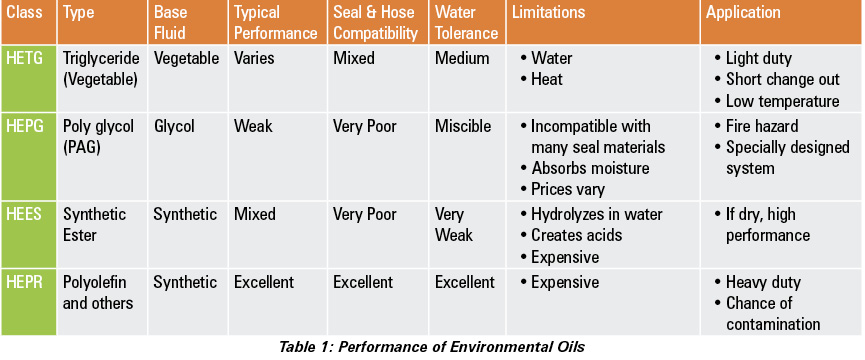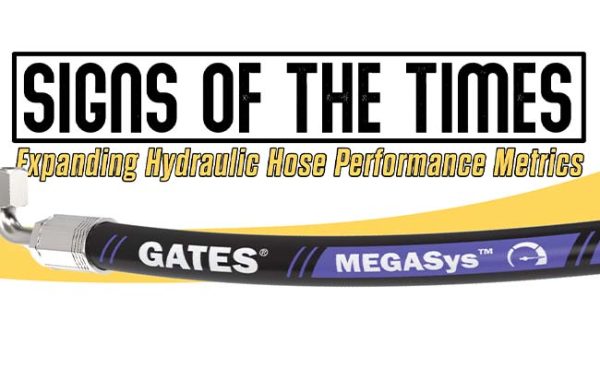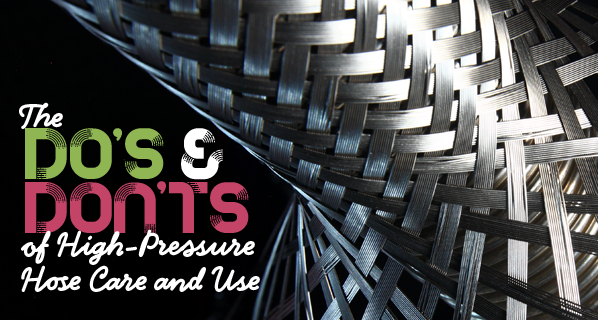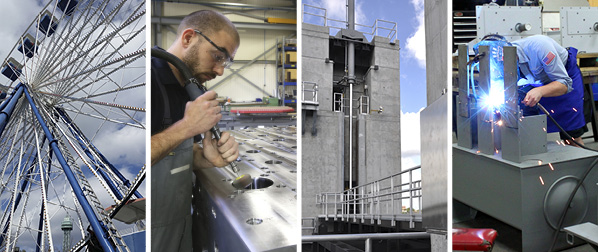Fluid Power Industry Going Green

Ensuring responsible use of lubricants to avoid environmental damage is an ongoing responsibility of those who work in the fluid power industry. As fluid power engineers working in a variety of markets look to use more environmentally safe fluids, it is important to understand the benefits and constraints of the various types of biodegradable fluids available. This article will examine differentiators for all readily biodegradable fluids. (Note: Only “readily biodegradable” fluids, which break down quickly when they enter the environment, were considered for this study. “Inherently biodegradable” fluids, which require long-term remediation due to environmental persistence, were not considered.) The following is a summary of the types of readily biodegradable fluids and the results found for each fluid.
Base Fluid Classification
There are four main classifications of environmentally preferable fluids as defined by ISO 6743/4: HETG vegetable-based, HEES ester-based, HEPG glycol-based, and HEPR PAO-based.
Conventional Vegetable-Based Fluids (HETG)
Early work in the field focused on lubricants made from vegetable oils (natural esters or HETG). Vegetable-based fluids are readily biodegradable, but their performance is most suited to cool and dry operating conditions. Equipment operators must take care to ensure that such parameter boundaries are not violated. HETG fluids can typically only withstand operating temperatures under 180°F-200°F. As a result, vegetable-based fluids, when exposed to heat, will rapidly oxidize and therefore will have a limited life expectancy. Another issue with the vegetable-based fluids is that they become unstable when exposed to wet environments or contaminated with water. These fluids should be utilized in light-duty applications with controlled environments and relatively short change-out intervals.
Synthetic Esters (HEES)
The second phase of bio-development focused on synthetic esters (HEES). This classification of fluids is one of the most common synthetic biodegradables in the market. Synthetic esters are readily biodegradable and perform well in standardized oxidation tests, which determine the life of the lubricant under test conditions. When new, clean, cool, and dry, synthetic esters offer excellent performance.
Esters are synthesized by the reaction of a triglyceride (typically vegetable oil) with an acid and an alcohol. This reaction makes the ester, and forms water and heat as by-product. Expressed chemically:
Vegetable Oil + Alcohol + Acid ↔ Synthetic Ester + Water + Heat
The double-headed arrow indicates that the reaction goes in both directions. Therefore, when water is present, the reverse reaction occurs and is known as “hydrolysis.” This reforms the alcohols, acids, and the triglycerides. In machine service, the acids can cause rust and wear, seal degradation, and corrosion to yellow metals. Consequently, ester-based fluids must be maintained in a cool, dry state to obtain maximum performance. Because of harsh production environments, synthetic esters may not perform as well in some industrial applications regardless of their biodegradability characteristics.
Poly Glycol (HEPG)
PAG fluids offer a wide range of performances and characteristics, most notably the ability to absorb water and resist flame. These characteristics severely limit its use in some industrial applications since it draws water into the system, creating rust and wear. From a performance perspective, they are frequently incompatible with conventional materials and need special seals and filters. In addition, they are incompatible with conventional lubricants, and a complete flush is required to change over. If PAGs enter the environment, they will disperse in the water, reducing the ability to clean up the fluids.
PAO-Based Fluids (HEPR)
The remaining classification is the HEPR group. This classification embodies fluids derived from PAO-base stocks, such as bio-polyolefin. One distinct advantage of PAO-based fluids is that they can be tailor-made to fit specific requirements. These fluids do not hydrolyze (break down when mixed with water), making them very stable in hot, wet conditions. Bio-polyolefins are typically compatible with Buna N, Viton, all common elastomers, and adhesives used in filters.
Table 1 (click image to enlarge) shows the various performance characteristics of the different classes of environmental fluids and where each should be utilized. Based on the extensive findings, we can conclude that bio-polyolefin synthetic biodegradable oils perform best in offshore fluid power industry applications, whereas the other three types of fluids are too weak to perform well in these very specific applications.
Field Performance
Terresolve took these findings into consideration to create readily biodegradable fluids that can serve as direct replacements for synthetic-based and petroleum-based hydraulic fluids. Envirologic 3046 is bio-polyolefin synthetic hydraulic fluid that shows excellent performance with viscosity in specification, low acid number, and little to no wear.
In 2002, Terresolve began a long-term field trial with a major offshore drilling contractor. All performance aspects were recorded and logged for over 20,000 hours. The central hydraulic system and auxiliary systems operated over 40 different pieces of equipment from most major manufacturers including National Oilwell Varco, Weatherford, Schlumberger, Ingersoll Rand, and others; it powered five hydraulic power units from Hannon and Rexroth axial-piston variable-stroke pumps. The test found that the fluid and system performed perfectly, showing no wear, oxidation, or breakdown of any kind. The contractor was able to reduce operating costs by over $150,000 per year by reducing downtime from valve sticking and reducing fines. Over the long term, additional savings were recognized because they were able to reduce leakage and extended fluid life to over twelve years, as exhibited in Fig. 1.

Since the study, several contractors have expanded the use of biodegradable products throughout their fleets, including cranes, deck machinery, and a variety of pipe-handling equipment.
Investing in Biodegradable Fluids
Despite the rising cost of petroleum products, biodegradable lubricants cost more than conventional products on a per-gallon basis. The reason for this is they start with more expensive base fluids and utilize more expensive chemistry that will deliver the performance required without reducing environmental benefits.
In the long term, the initial investment is small when compared with the cost of fines and cleanup in the case of a spill and the overall environmental impact. In most cases of oil leaks or spills, major fines and clean-up costs can be greatly reduced or eliminated by using readily biodegradable fluids. For example, if a supervisor of an offshore rig can increase overhaul interval time by even one year, a rig can save tens of thousands, if not hundreds of thousands, of dollars.
Readily biodegradable lubricants must be properly maintained. Since the key to long fluid life and top-tier performance is keeping the fluid clean and dry, proper filtration is essential. As fluid power engineers consider adopting these readily biodegradable fluid solutions, these findings are crucial to observe before making the best choice.








